After visiting Hortensia Mi Kafchin’s exhibition “Cheerful Melancholia” at the Judin Gallery in Berlin (24.02. – 6.04.2024) and our meeting in her studio, I have been reflecting on Hortensia’s universe throughout these months. Although originally envisioned as a short article, I couldn’t resist the temptation to get lost in the labyrinth of her oeuvre. Moreover, it proves that Hortensia is currently one of the most relevant Romanian artists, managing to go beyond the parameters of virtuosity in a transgressive view of existential anguish: the authenticity of being, anxiety, depression, powerlessness in the face of the absurdity of the world.
Her paintings and themes capture contemporaneity in a unique way, addressing issues that are present on an individual and universal level alike, spanning eons. While her generation, under the auspices of the Cluj School of Art, still focuses on post-communist themes and fails to be “brought up to date”, the world created by the artist is a much more faithful reflection of the present, where multiple concerns coexist and are impossible to prioritize, from personal anxieties, social, political and climate changes, to the hardships of the LGBT+ community, the issues of technological development, the internet and artificial intelligence. We live in an age in which we often reflect on these issues, willingly or unwillingly, as we surf online for hours at a time, lost among the millions of bits of information we receive, in a state of helplessness and passive complacency.
Hortensia accurately captures this turbulent experience of contemporaneity, being par excellence a Romanian artist who can live authentically only in the West, in the Berlin diaspora, because of the social non-acceptance of her trans body in her own country. But beyond her resentment of Romania, she promotes her homeland in “soft power” fashion, for which she has a love and attachment, and is often represented in the background of her works. When she is not painting in her home-studio, she spends her time playing with Lego Mindstorms NXT, modeling “by hand” using the potter’s wheel in Pottery VR or building in virtual reality – with Oculus Rift goggles on her face and the controller in hand – her futuristic house that simulates constructing in clay. With a huge screen in her studio, constantly streaming global news and the latest technological developments on YouTube, the artist works on several pieces at the same time stretched out on her easel or potter’s wheel, adding in details as “inspiration strikes”.
Trying to describe Hortensia in a single article seems almost impossible. I get lost in the details of each piece as if it were a work of Hieronymus Bosch, scattered like puzzle pieces that the viewer is invited to reconstruct in infinite ways. Her work flows beyond space and time (see Time swallowing me) to the confluence of primordial and future worlds. My considerations stem from the exhibition “Cheerful Melancholia”, but attempt to encompass and understand the entire imaginarium that is Hortensia’s body of work.
Education and training
A younger-generation colleague at university and studio-mate of the “Cluj School” artists at the Paintbrush Factory, Hortensia managed to transcend both the themes and the specific technique of her generation and did not allow herself to be swept away in the wave of epigones who followed and attempted to emulate a movement that had already become internationally famous. A graduate of the Ceramics, Glass and Metal Department at the University of Art and Design in Cluj-Napoca, Hortensia always wanted to learn the craft, to execute it correctly and properly, considering painting too easy, never imagining that money could be made from it. “I liked to work because the bohemian lifestyle comes second, first of all it’s important to master the technique and mastery,” admits Hortensia.
Trained at the high school of art in Galati, she was a prodigious child in the arts, winning multiple prizes in national and international school competitions, with committed teachers who, after the `90s, began to enroll their students in various competitions abroad and in turn received merit salaries for the students’ performances, which motivated them to get invested in their success. Hortensia painted throughout her teenage years; it came naturally to her. She recalls with pathos how she suffered as a child when she failed to win the prize in the national icon painting “The Child’s Soul Icon Competition”, “it was one of my childhood goals to take the grand prize”, and how she participated in Byzantine icon painting camps every year. She eventually won the Special Jury Prize. Alongside high school, she began an apprenticeship with her teacher, whom she helped to carry out commissions in stone, wood and metal, familiarizing herself with the tools (found scattered throughout her canvases) that she would later use when she opened her own studio in Cluj.
She got into university in Cluj University without difficulty. As the winner of the national art olympiad, she could choose any department and college she wanted. To support herself financially, she put everything she had learned in Galati into practice and opened a manufacturing workshop, producing interior design pieces, wrought iron, gates, interior staircases, lighting, shower enclosures, decorations and bronze castings. A few months in and she already received an enormous order for busts, which allowed her to employ the work of her sculpture colleagues for two years, during which they created portraits of the great Romanian rulers and kings. The bust motif can be found in all of her works, with her self-portraits in oil borrowing the shape of the bust on a pedestal in sculpture.
Gradually, her workshop also began producing installations for artists and friends at the Paintbrush Factory and around the country. In a world before social media, where everything revolved around friendships and going out, the Paintbrush Factory’s first exhibition opened at the Laica gallery, an artist-run coordinated by Mircea Suciu, Șerban Savu, Marius Bercea and Vlad Olariu, after Hortensia helped them construct various installations. At the same time, Hortensia had already opened her first solo show at the Cluj Art Museum, curated by Bogdan Iacob.

Drawing on the gallery’s name, Laica, Hortensia imagined the habitat of Laica the dog, who never returned from space, and the work was later bought by Mircea Suciu. While working as the custodian of her own exhibition (a run-space artist without a curator), she met another colleague from the Factory, Adrian Ghenie, with whom she struck up a lasting friendship. Hortensia offered her technical expertise and became his assistant for a while, later collaborating on the famous work The Dada Room, now in the Stedelijk Museum voor Actuele Kunst. After Adrian moved out of the country, Hortensia remained in his studio and together with colleagues Maria Balea and George Crîngașu opened the artist-run space Superliquidato, on the threshold between painting and digital art.
In the meantime, she started collaborating with Sabot gallery and in 2012 she participated in the third edition of the contemporary art triennale (formerly “La Force de l’Art”) at Palais de Tokyo. From here onwards, Hortensia’s career becomes internationally recognized, as she collaborates with galleries like Plan B, Nicodim, and currently with the Judin galleries in Berlin and P·P·O·W in New York, and is currently one of the most renowned Romanian artists worldwide. Hortensia imagines futuristic environments, combining alchemy, technology and mystical interpretations through large installations made out of constructed and deconstructed objects, televisions, prints, wall drawings and paintings that recreate a cyber-punk atmosphere with post-Chernobyl landscapes, hardware, Greek columns and Soviet blocks. Relevant for this period, in which “tech” objects are subsequently moved into the two-dimensional realm of painting, are the solo shows “Reverse Engineering of the Self”at the TRAFÓ HOUSE OF CONTEMPORARY ARTS gallery in Budapest and “Memories from the depths of the Thetys Sea” at MNAC, in 2016.
Although settled in Berlin for years now, many of her recent works feature her native Galati in an attempt to be uprooted (see the works Baghdad Batteries, 2022 and Tree that moves its legs, 2021-2023), Romanian villages (My Transylvania, 2021; Vârlezi, Old spaceships in my grandmother’s yard, 2012; Tree of Wishes, 2020 – revisited in 2024 ) and post-communist cities with the cottonwood trees and apartment blocks of her childhood (Chemtrails Over My Neighborhood, 2019; Cloud Nine, 2020; The 4th floor, Tiglina 1, str Regiment 11 Siret, BL. C 21 Ap. 20, Galați; Block Where I Grew Up, 2020; Autumn from my Childhood, 2018).

Hortensia Mi Kafchin, My Transilvania, 2021, oil on wood, 50×54 cm.

Hortensia Mi Kafchin, Chemtrails Over My Neighborhood, 2019, oil on canvas.
The Fool
The neo-metaphysical imaginarium present in her work is reminiscent of de Chirico’s paintings. Pieces of urban and rural Romanian landscapes, on which Greco-Roman columns and capitals can be found alongside futuristic factories, are the backdrop to an unfolding of time and space, which thus transcends human cognition and resides beyond the tangible (where, unlike the sharp shadow of de Chirico’s landscapes, which places his works in a particular time of day, in a specific location in Italy, in Hortensia’s oeuvre the shadow disappears). When not presenting herself with precise depictions of her facial features, Hortensia’s silhouettes support the political and religious constructs of her time. An iconic work, Religions on the Genitals (2023) brings to the fore the symbols of the four major religions that are part of our cultural DNA and how they control queer bodies. We see the representative monuments of these religions built imposingly on the genital area of the support-body as a symbolic surveillance of the organs. Similarly, de Chirico’s faceless mannequins, appointed as philosophers, poets or archaeologists, are co-mingled with Greco-Roman archaeological elements in the paintings Gli archeologi, 1927 and L`archeologo solitario, 1937, imagining the decline of contemporary Italian civilization.

Hortensia Mi Kafchin, Religions on the Genitals, 2023, oil on canvas, 90×120 cm.
Elements from the past, present and future come together on Hortensia’s symbolism-filled canvases as a vivid, non-hierarchical chronicle of our times, where personal anxieties mingle with global concerns. Hortensia’s characters are accompanied by the historical baggage of the place where she was born and shaped, a present in bodily transition and an uncertain future that announces itself in the background on the news.
The alchemical motifs that punctuate the journey through the artist’s universe are reminiscent of the Fool’s journey through life in the Arcana Major, identified in the Tarot as a journey to know the world, where each character represents a new experience and insight, which the Fool gains as he progresses. Similarly, Hortensia’s works document her journey around the world, from Galati to Berlin, as she scrolls online or informs herself of what is happening in the world, often through visceral depictions that expose the viewer to the surgical transformations to which the trans body is subjected. A host of talismanic symbols serve as biographical markers, providing a window into the artist’s journey and struggles.
A New Beginning
The brain is the first to face gender dysphoria and conflicting inner thoughts and, in her works, it often takes the shake of a snake (Me and my fears din 2015, The Ancient Part of My Brain, 2016, or the more recent Enemy Mine, part of the exhibition at Judin). The snake-brain – the snake is a Christian symbol for Sin and Evil, and it represents physical sexual desire in rabbinic literature – illustrates the opposing forces of shame and reason, perpetually mingled with the artist’s Orthodox upbringing.

Hortensia Mi Kafchin, Enemy Mine, 2013-2024, oil on canvas, 120×.140 cm. © Galerie Judin.
In Between Micro and Macro from 2016, the brain is divided, with one side looking through the microscope at itself, into a realm of dreams (under the microscope there is a dreamcatcher), while the other looks towards the infinite sky, into the future, through a telescope.

Hortensia Mi Kafchin, Between Micro and Macro, oil on canvas mounted on wood, 115×98.8 cm, 2016.
Hortensia’s journey, on both an artistic and personal level, was almost integrally documented on social media and conscientiously presented to viewers. However, this documentation through painting instead of the typical social media photo journal makes for a more intimate experience, heightened by the aura of the canvas, granting uniqueness to each piece as well as safety for her body, which remains anonymous. Transitioning is a motif for initiating the public, who witnesses what the artist’s anatomy had to go through (often in great detail) as well as the turmoil that comes with these bodily changes due to hormones, surgery, post-op recuperation or nightmares fueled by the ever-growing global threats – global warming, nuclear energy, atomic bombs, consumerism, energy wasted by the new AI or crypto tech.
The beginnings of this transformation and the first sources of anxiety (surrounding Romania in the 2000s) can be identified in works like Bearded Transphobic Robot from 2013 – which illustrates “the feelings of shames and fear at the start of transitioning” in the guise of a robot killing trans people in an ultra-conservative, patriarchal and religious Romanian land – or in Orthodox Exorcism Session, from 2019, where orthodox priest attempt to exorcize queerness. In Shop Window at Night from 2017, a young art student is present, holding his tools of trade in his hands and bag, passing by a women’s clothing store and exploring new emotions and beginnings.

Hortensia Mi Kafchin, Bearded Transphobic Robot, 2017
The struggle with gender dysphoria in the mirror and the impossible standards of female beauty are recurring themes in Hortensia’s work. In 2016’s Trying to Be Beautiful, we identify a fanged animal staring in the mirror – a vanity mirror – a beast that wants to become “beautiful” by means of compact powder (a symbol of the make-up industry) that fails to cover its “snout”; in 2016 we also encounter forest creatures delivering hormones and other purchases needed for outward transformation (reminiscent of Disney’s Snow White) to a female figure standing at the entrance/exit of a cave, under the auspices of time and rebirth in a new zodiac sign. Hair loss is also a major fear, with the artist naming her first solo show at the P·P·O·W gallery in New York, in 2023, “Years of Bad Hair”.

View from the solo show “Years of Bad Hair” at P·P·O·W Gallery New York, 2023.
Hair accessories are easily identifiable in multiple paintings such as Situationship, 2023, Years of Bad Hair Day, 2022, Telomeres lengthening / Fountain of Youth, 2021, or the Bozzetto terracotta sculpture, 2016, which depicts a wig, the title recalling the preparatory clay studies for larger sculptures.

Hortensia Mi Kafchin, Years of Bad Hair Day, 2022-2023, oil on canvas, 120×100 cm. © P·P·O·W.

Hortensia Mi Kafchin, Telomeres lengthening, 2021, oil on hemp canvas, 194.9×278.1 cm.
The brush and the mirror (from the Latin speculum = to observe), symbols of vanity and the seductive power of women in Renaissance and Baroque paintings, become a symbol of identity, of the reflected external appearance that does not match the authentic self (Countess Elizabeth Báthory ll) and of the internal knowledge that conflicts with what is “seen”.
The mask-appearance (or the new self) is forged by Hortensia over several years. In 2014’s Past Activities, the welding-masked artist began to construct a cyborg-self, an early humanoid skeleton. The skeleton would then be given the mask of new bodily modifications, the face being the first support for the surgeries to come, but also for spiritual transformations – in Burning Symbols, 2017, the anonymous author wearing a mask over her ghostly self throws alchemical symbols into the fire that forges a possible future. In her canvases, we then trace her mental preparation for the feminization and hair implant surgeries over the years, as the artist envisions them during her study of them, or as she remembers them after recovery. In 2017, we uncover the work Sleep (Forehead Operation), which is a first craniofacial surgery to lower the hairline and shave the forehead. Here, the artist shares her experience in surgical detail, hoping that the viewers realize, beyond imagination, what the operation entails, while sleeping in a silence reminiscent of a pre-raphaelite portrait.
Surgery is rendered in a symbolic-mystical key in the 2013 works Situationship and Future Self, where a self-portrait posed onto a pedestal prefigurates a new facial feminization surgery scheduled soon.
If Future self still depicts an androgynous form gazing towards the light emanated by surgical tools, in Situationship, the cyborg-character gazes at the mask that will soon be attached while brushing her hair, already ready to take the path to the castle, reminiscent of de Chirico’s Red Tower. In the background, the artificial pink light for growing plants in hot houses, away from nature, is feeding a plant/tree with roots growing so large, they break the plant pot – a metaphor for a new beginning, a new visage.

Hortensia Mi Kafchin, Situationship, 2023, oil on canvas, 158×136 cm. © Galerie Judin.
The severity of facial feminization surgery, which involves peeling away and rearranging the face, is a motif in her recent work, My Brand New Forehead / FFS Among Stars. A head, floating without a body among the stars, now reveals what was once only hinted at, when blood only trickled down the edge of her forehead. This time, the artist does not spare the public and reveals her post-op experience, while the stars bring serenity and peace to her anesthesia-induced sleep.
Vaginoplasty is, of course, an(other) important surgery the artist approaches in her piece Vaginoplasty, from 2017, where a figure poses in a similar fashion to that of Courbet’s L’Origine du monde. It can also be seen in the 2019 work The end of the world / Fear of not having an orgasm, where forceps and other medical instruments cut through skin and bone.

Hortensia Mi Kafchin, Vaginoplasty, 2017
Works like these speak about the mental preparation it took for the artist to familiarize herself with medical terms and surgical imagery. Besides these two works focused on the genital area, the 2023 work Battle Bots and Deep Anesthesia, the multi-colored figure is now in the operating room and, although fully anesthetized, spasm under the instruments held by three cyclops-medics.

Hortensia Mi Kafchin, Battle Bots and Deep Anesthesia, 2023, oil on canvas, 120×100 cm.
The three cyclopes, Arges, Steropes, and Brontes, sons of Uranus (The Sky) and Gaea (Mother Nature) were originally the blacksmiths who forged the thunder of Zeus, the trident of Poseidon and the helmet of Pluto. Who better than these three to perform the operation, seen by a world full of hate as an “act against nature”. In the righthand corner, a yellow ray of sunlight is cast over the cold light of the operating table, while the body slips into the slumber of anesthesia – it is the same light emanating from the surgical instruments in Future Self.
Body transformation is also seen as spiritual – not just physically, through surgery – through the symbolic vessel pouring the self into another vessel (the Vessels series). Greco-Roman ceramic amphoras were used as storage for food and various objects needed for the deceased’s new life – the eternal afterlife. These vessels are inscribed with binary code specific to computational language, while the works Changing Vessels / From Flesh to Code and Vessels II depict a carnal vessel pouring liquid, akin to the body offering its soul to a new vessel, the vessel of reason, technology, and the future. The past, present and future intertwine; ancestral thinking coexists with scientific thought.

Hortensia Mi Kafchin, Vessels II, 2023, oil on wood, 80×60 cm. © Galerie Judin.
In Countess Elizabeth Báthory I and ll, a nurse pours the blood of virgins, lying on the ground, over the countess/artist from an amphora-vessel in an attempt to attain immortality and feminine beauty. On the fireplace mantle sits a representation of the fountain of youth, a recurring symbol in Kafchin’s work. The fountain of youth and time, represented by clocks, hourglasses, hours, symbolizes the struggle with the passage of time and growing old, the urgency for a cure against the physiological marks that will soon appear, before the artist is swallowed by time, as seen in Time Swallowing Me, and the transition is completed (a question mark over the genital area).
Hortensia’s oeuvre is a testament to both vulnerability and resilience, and the artist does not shy away from revealing herself to the public in the most authentic way, elevating the self-portrait to the realms of philosophy and reflection, overcoming the mere two-dimensional representation.
Global Issues and Art History
Although Hortensia’s works can easily be interpreted through a biographical lens, they constantly engage in broader explorations of cultural, social, economic issues through graphical representations or quotes from art history.
In Cheerful Melancholia, she is seen scrolling on her phone and also identified with Dürer’s angel from Melancholia, brought into the contemporary. The multi-colored winged angel, under the rainbow and LGBTQ+ flag, with the router beside him, in an internet-accessible heaven, gazes into the sky in a state reminiscent of doomscrolling. Floating on the water, the cruise ship puts into perspective the environmental footprint of such a mode of transportation, with carbon emissions significantly higher than flying or driving.

Hortensia Mi Kafchin, Cheerful Melancholia, 2024, oil on canvas, 160×140 cm. © Galerie Judin.
The dangerous consumption of water and energy resources by technology can also be seen in works like Angel in the Server Room and Drained Danube, both featured in the Judin exhibition. The rising sea level imagines a Danube that has flooded her home city of Galați. The point of view is that of someone on a ship in the middle of the storm, while the compass needles have already melted. Between the barrels of waste, appliances that have drained the world’s energy and Eastern European blocks, a fountain of youth still flows in the background. The desolate landscape warns of a near future. And the angel in the server room points to a possible salvation via the airwaves, which can still reach people who still believe in revelations, only this time the epiphany is via the internet.

Hortensia Mi Kafchin, Angel in the Server Room, 2020-2022, oil on canvas, 80×100 cm. © Galerie Judin.
But Hortensia is not just disbelieving, she is also hopeful for the future and has faith in technology as potentially helping humanity. But at what cost? The artist does not shy away from representing the benefits of technological advancement as well as climate concerns and the possible apocalypse brought about by the capitalist development dominating energy consumption.

Hortensia Mi Kafchin, Drained Danube, 2022-2024, oil on canvas, 191×569 cm. © Galerie Judin.
The artist also quotes other classical works in a proud act of queerwashing. Raphael’s School of Athens, in which Plato points to the world of ideas and Aristotle to the material world, is satirically reimagined by Hortensia through a hetero vision of distorted, pink stereotypical feminism. For Hortensia, the original School of Athens fetishizes the masculine outlook on intelligence and reason, where only men can dabble in craftsmanship, reflection, philosophy. The two contemporary-dressed girlfriends with purse and phone in hand walk and chat attentively through the hallway of a building under construction. The school is being built with them at its center. The construction work has begun, and the tools and equipment around them, which appear in many of Hortensia’s works, allude to the artist’s academic training.

Hortensia Mi Kafchin, Old Friends, 2016-2023, oil on canvas, 160×140 cm. © Galerie Judin.
The recent solo show in Berlin also includes the work From Brâncuși with Love, which shockingly draws attention by juxtaposing the trans body with Brancusi’s Miss Pogany. The artist derides her fellow countrymen’s aggressive use of Brancusi’s work to promote the country, even though he is an artist, like herself, exiled in diaspora, misunderstood during his lifetime and even after his death, for decades, in Romania. Nowadays, he is being reclaimed by the conservative right, used to promote the heteronormative nationalism of the bearded Romanian peasant, although his works are par excellence phallic and therefore opposed to demure sentiments. The work Bird in Flight was denied entry to the United States in 1927, and in 1920 the work Princess X was removed from the Salon des Indépendants exhibition in Paris on charges of obscenity. The populist Brancusi public refused to regard his work as penis-like, for fear of giving in to the accusations of his detractors. But Hortensia goes one step further and imagines Brancusi’s work as a dildo, in front of a trans body with its penis captured in a cage. Kafchin bravely reconfirms the penis with testicles form of Princess X (although the choice for the dildo here is Miss Pogany, a more famous work), criticizing the hypocrisy of Romanian authorities who misuse and abuse Brancusi’s name and work year after year to promote values that do not correspond to his art. Through this gesture, Hortensia hopes that his work will not be associated with such nationalist and homophobic ideologies, proposing an alternative and inclusive vision.

Hortensia Mi Kafchin, From Brâncuși with Love, 2023, oil on canvas mounted on cardboard , 50×70 cm. © Galerie Judin.
I conclude the text by saying that beyond international fame and museal validation, Hortensia Mi Kafchin aspires to be a voice of her times, refusing to be isolated on a pedestal. She sees art as a means to actively participate in contemporary energies and discourse, keen to be a witness to the major events of her era, as well as the “minor” grassroots events in Romania. This is why we often see her present in group exhibitions in small artist-run spaces, basements, galleries at the beginning of their journey (which align with her principles), where she lends works from important private collections.
Her work tackles all the contemporary issues felt by the information-burdened individual, leading to an anxiety that paralyzes understanding and decision making. Highly skilled in the craftsmanship of art, Hortensia’s canvases manage to traverse the history of art and humanity, bringing herself into a deeply authentic existence, here and now, perfectly aware of the present, the future and her own mortality and temporality in a possible and ever-changing universe.
Translated by Marina Oprea
POSTED BY
Gabriela Mateescu
Gabriela Mateescu is a Romanian artist and author who lives and works in Bucharest, working with video, installation, drawing and performance. Her work is feminist, autobiographical and self-referenti...
spam-index.com/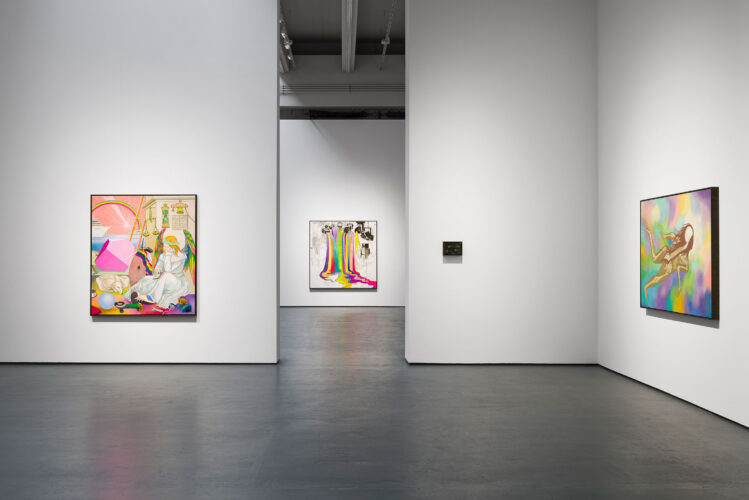
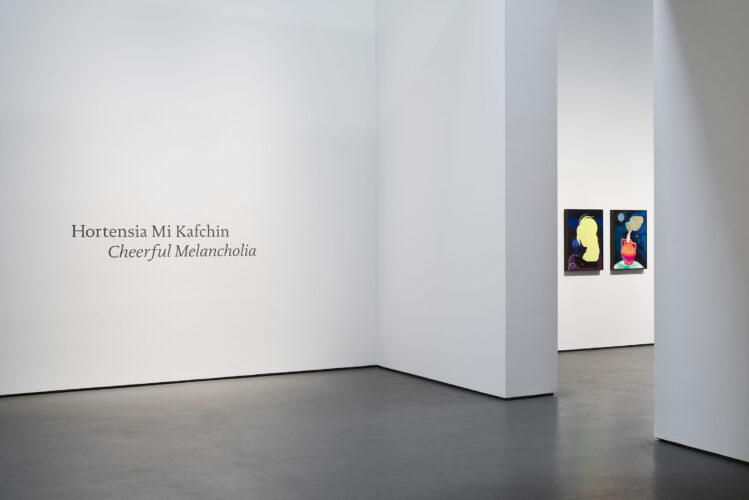

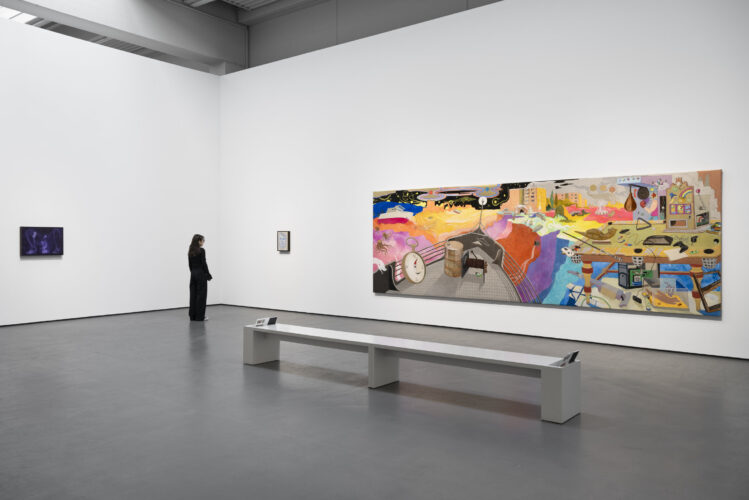
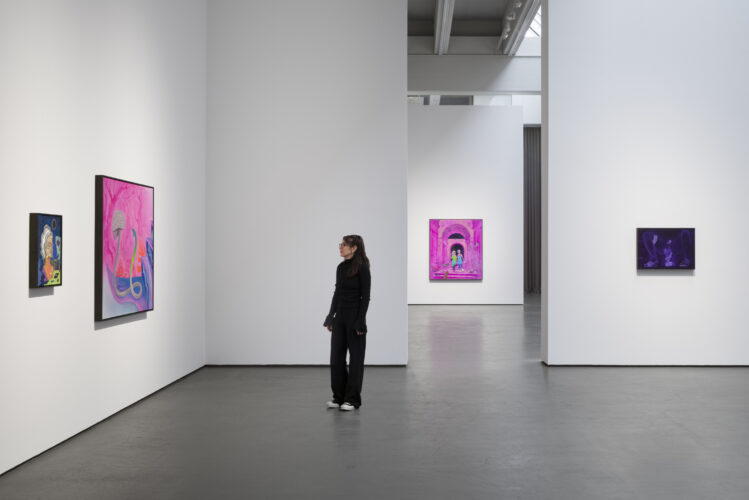
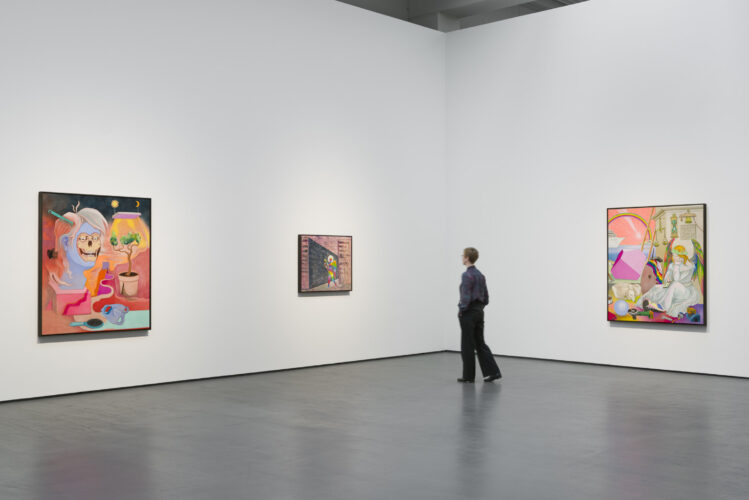


Comments are closed here.